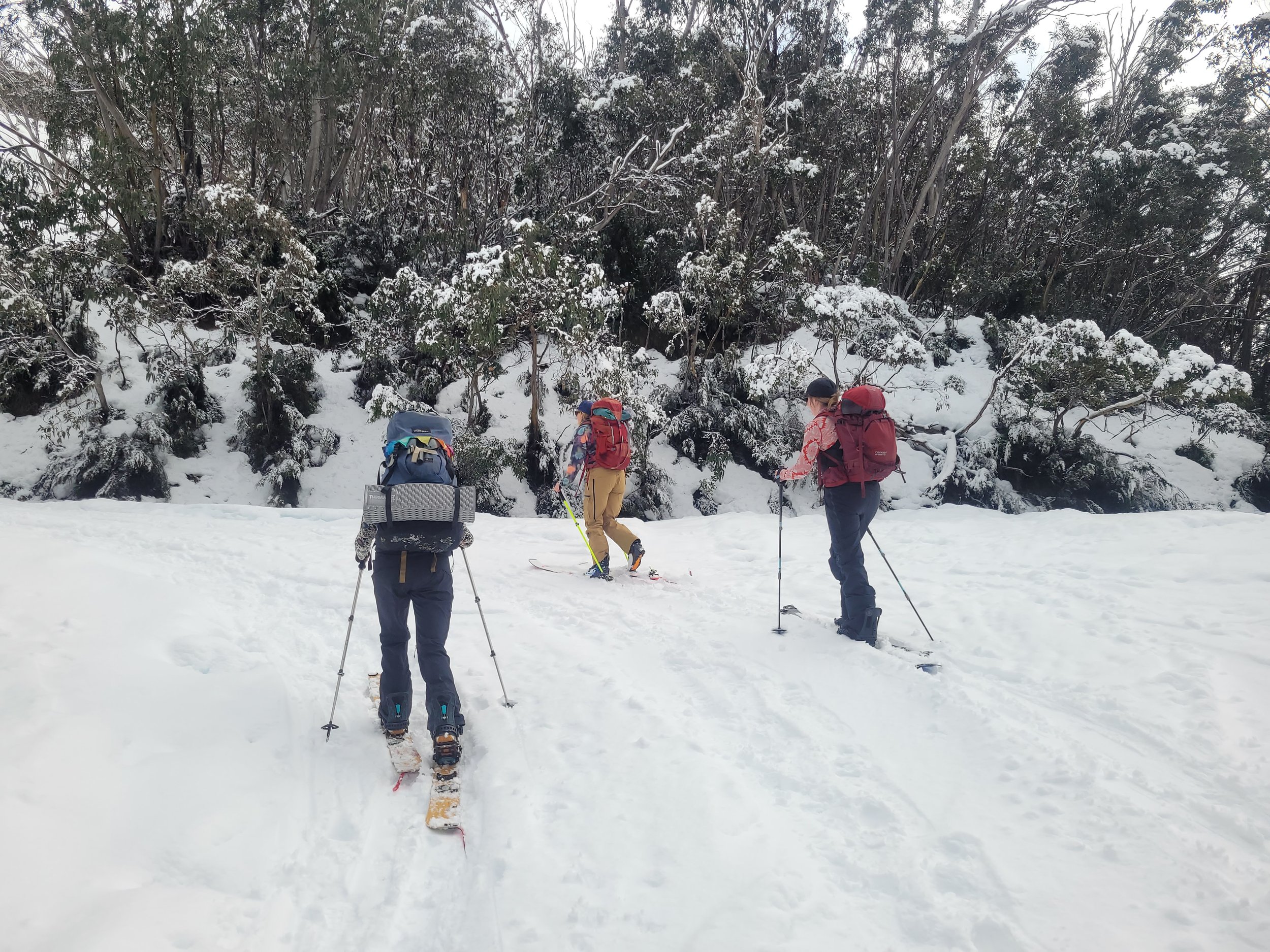So you want to experience the magic of the Australian backcountry? Any good ski or splitboard backcountry tour starts with some essentials. This is the hardware you'll need for a day in the backcountry and what you will use and wear straight from the trailhead.
Touring Equipment
Skis / Board with touring capabilities
Ski or Board Boots
Climbing Skins
Snow shoes and compatible boots to wear with them
Extendable ski poles
Clothing
Socks and thermals (wicking and natural fibers preferred)
Mid Layer (fleece or light weight jacket)
Waterproof Shell Jacket and Pants
Next you'll need to think about what to pack in your bag. This will be dependent on where you are going, the expected weather, who you will be with and for how long. A 25-35L pack should be sufficient to carry everything you need and it is important that your bag has ski or board carrying functionality.
General Equipment
First Aid Kit (including tape for blisters)
Repair Kit (duct tape, cable ties, Spare binding screws, Ski Straps, Utility cord)
Ski Strap to lash skis together
Sunscreen
Lip Balm
Headlamp
Spare Batteries for headlamp, avalanche beacon etc.
Pocket knife or multi tool (ensuring that it works with your ski or board bindings)
Emergency Shelter (Space Blanket and Emergency Bivvy Bag)
Helmet
Personal Locater Beacon
Additional Layers and Eye Protection
As you move throughout the mountains, you will heat up whilst skinning and cool down when stopping for breaks and skiing/boarding. The weather can also change, wind can pick up, the temperature can rise. For this reason it is important to be able to dump heat or layer up to keep yourself from overheating or getting too cold.
Beanie
Hat
Buff (for sun and wind protection)
Goggles
Sunglasses
Insulation Layer (heavy weight down or synthetic for emergency situations)
Insulated gloves
Light gloves (ideal for use while skinning)
Navigation
Weather can move in quickly in the mountains, and a sunny day can quickly turn into a whiteout. It is important you have the tools and the know how to safely navigate home.
Maps
Compass
GPS
GPS app on your phone (if planning to use your phone as a GPS remember a power bank and cord)
Avalanche Equipment
These are the necessary tools to find and recover a missing person in the event of an avalanche. Even more important than avalanche gear is training, practice, and self-awareness.
Beacon
Shovel
Probe
Ice management
Ice is a major hazard in Australia, especially on the steeper slopes of the main range or anywhere you will have difficulty climbing out of. The following tools will help to assist you to move around safely in icey conditions.
Ski Crampons
Ice axe or whippet
Boot Crampons
Food and Water
1 litre wide mouth drink bottle (ideal for stuffing snow or refilling)
Wraps, Chocolate, nuts, musli bars (anything that is nutrient dense, low packaging and has the caloric requirements to counter your energy output)
Now you are packed and ready for a day in the mountains!
Make sure to check the MSC backcountry condition report to help understand the weather, snowpack and relevant hazards and then plan your trip accordingly!

